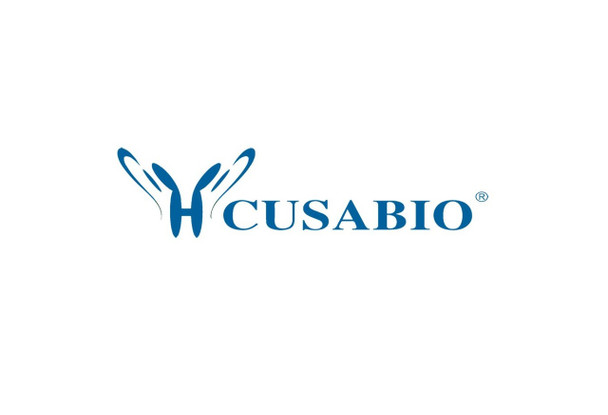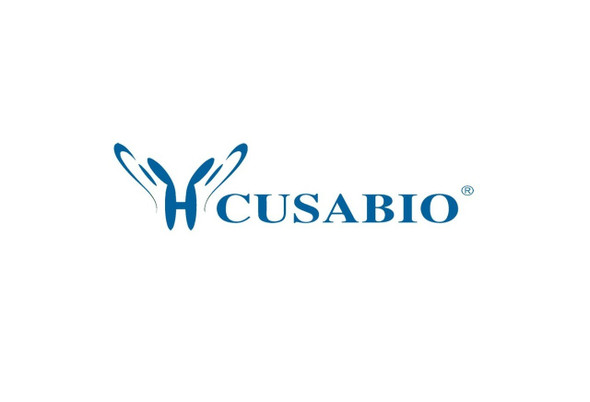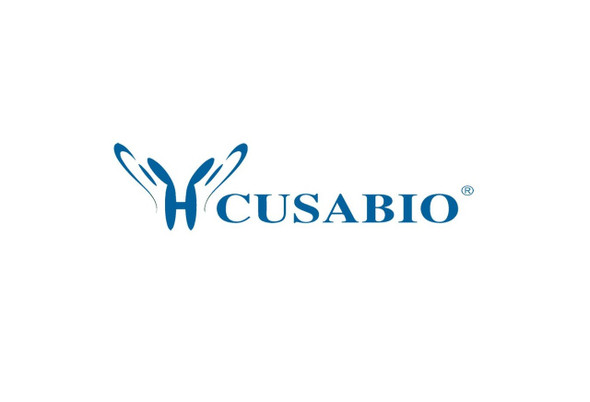Cusabio Human Recombinants
Recombinant Human Von Hippel-Lindau disease tumor suppressor (VHL) | CSB-EP025852HU
- SKU:
- CSB-EP025852HU
- Availability:
- 3 - 7 Working Days
Description
Recombinant Human Von Hippel-Lindau disease tumor suppressor (VHL) | CSB-EP025852HU | Cusabio
Alternative Name(s): Protein G7 pVHL
Gene Names: VHL
Research Areas: Cancer
Organism: Homo sapiens (Human)
AA Sequence: MPRRAENWDEAEVGAEEAGVEEYGPEEDGGEESGAEESGPEESGPEELGAEEEMEAGRPRPVLRSVNSREPSQVIFCNRSPRVVLPVWLNFDGEPQPYPTLPPGTGRRIHSYRGHLWLFRDAGTHDGLLVNQTELFVPSLNVDGQPIFANITLPVYTLKERCLQVVRSLVKPENYRRLDIVRSLYEDLEDHPNVQKDLERLTQERIAHQRMGD
Source: E.coli
Tag Info: N-terminal 6xHis-tagged
Expression Region: 1-213aa
Sequence Info: Full Length
MW: 28.2 kDa
Purity: Greater than 85% as determined by SDS-PAGE.
Relevance: Involved in the ubiquitination and subsequent proteasomal degradation via the von Hippel-Lindau ubiquitination complex. Seems to act as a target recruitment subunit in the E3 ubiquitin ligase complex and recruits hydroxylated hypoxia-inducible factor (HIF) under normoxic conditions. Involved in transcriptional repression through interaction with HIF1A, HIF1AN and histone deacetylases. Ubiquitinates, in an oxygen-responsive manner, ADRB2.
Reference: "The von Hippel-Lindau tumor-suppressor gene product forms a stable complex with human CUL-2, a member of the Cdc53 family of proteins." Pause A., Lee S., Worrel R., Chen D.Y.T., Burgess W.H., Linehan W.M., Klausner R.D. Proc. Natl. Acad. Sci. U.S.A. 94:2156-2161(1997)
Storage: The shelf life is related to many factors, storage state, buffer ingredients, storage temperature and the stability of the protein itself. Generally, the shelf life of liquid form is 6 months at -20?/-80?. The shelf life of lyophilized form is 12 months at -20?/-80?.
Notes: Repeated freezing and thawing is not recommended. Store working aliquots at 4? for up to one week.
Function: Involved in the ubiquitination and subsequent proteasomal degradation via the von Hippel-Lindau ubiquitination complex. Seems to act as a target recruitment subunit in the E3 ubiquitin ligase complex and recruits hydroxylated hypoxia-inducible factor (HIF) under normoxic conditions. Involved in transcriptional repression through interaction with HIF1A, HIF1AN and histone deacetylases. Ubiquitinates, in an oxygen-responsive manner, ADRB2.
Involvement in disease: Pheochromocytoma (PCC); von Hippel-Lindau disease (VHLD); Erythrocytosis, familial, 2 (ECYT2); Renal cell carcinoma (RCC)
Subcellular Location: Isoform 1: Cytoplasm, Membrane, Peripheral membrane protein, Nucleus, Note=Found predominantly in the cytoplasm and with less amounts nuclear or membrane-associated, Colocalizes with ADRB2 at the cell membrane, SUBCELLULAR LOCATION: Isoform 3: Cytoplasm, Nucleus
Protein Families: VHL family
Tissue Specificity: Expressed in the adult and fetal brain and kidney.
Paythway: HIF-1signalingpathway
Form: Liquid or Lyophilized powder
Buffer: If the delivery form is liquid, the default storage buffer is Tris/PBS-based buffer, 5%-50% glycerol. If the delivery form is lyophilized powder, the buffer before lyophilization is Tris/PBS-based buffer, 6% Trehalose, pH 8.0.
Reconstitution: We recommend that this vial be briefly centrifuged prior to opening to bring the contents to the bottom. Please reconstitute protein in deionized sterile water to a concentration of 0.1-1.0 mg/mL.We recommend to add 5-50% of glycerol (final concentration) and aliquot for long-term storage at -20?/-80?. Our default final concentration of glycerol is 50%. Customers could use it as reference.
Uniprot ID: P40337
HGNC Database Link: HGNC
UniGene Database Link: UniGene
KEGG Database Link: KEGG
STRING Database Link: STRING
OMIM Database Link: OMIM










